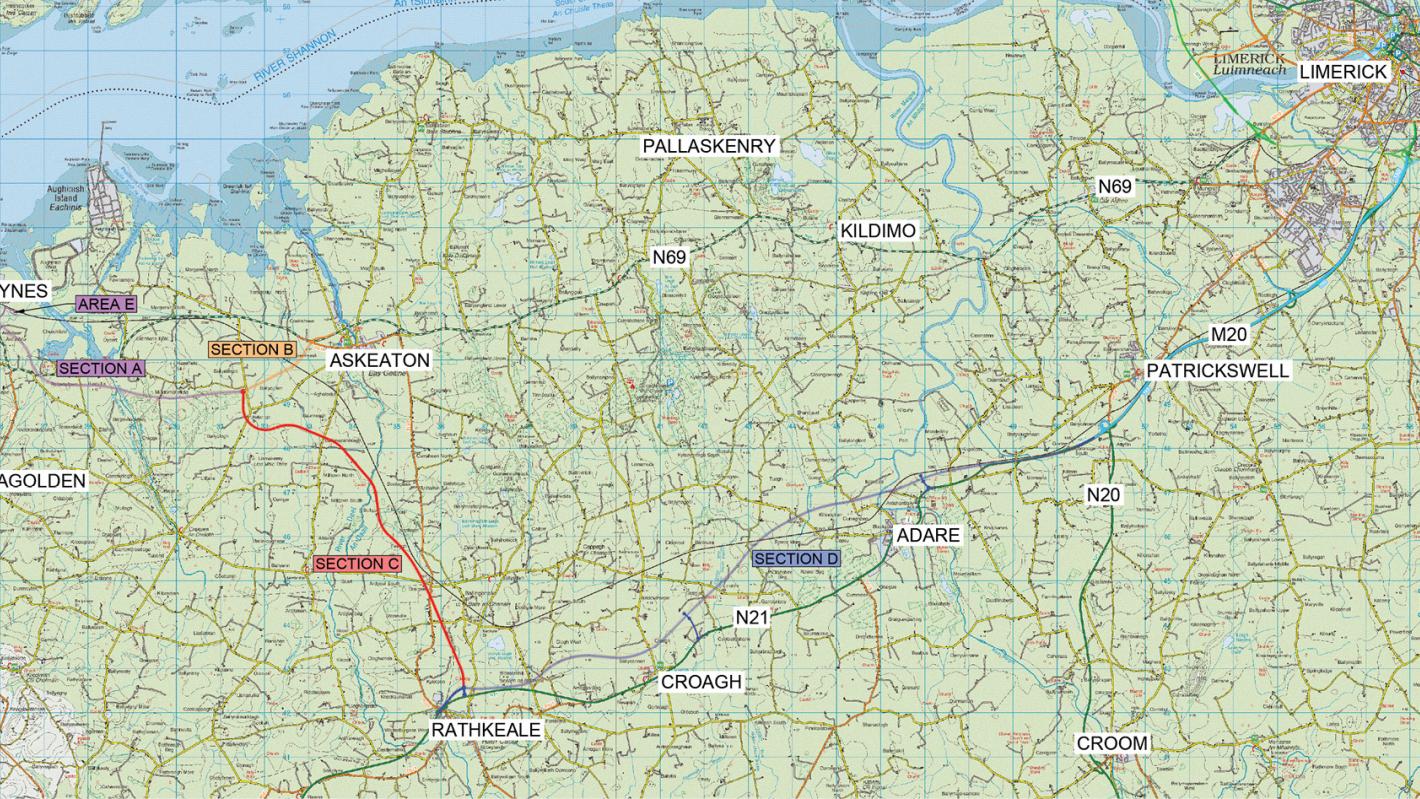
Map showing the route of the proposed development.
The project will provide a high quality road to connect the Port of Foynes to the Trans European Road Network (TEN-T), near the city of Limerick
On 30 August 2022, An Bord Pleanála (ABP) granted planning approval for the Foynes to Limerick Road (including Adare Bypass) project. The decision marked the achievement of a significant project milestone and brings Limerick City and County Council’s vision for greater connectivity within County Limerick and the wider mid-west region a step closer to reality.
The news was warmly welcomed by the ROD-AECOM project team, who have been involved in the project since 2014, when they were engaged by the council to undertake the planning, design and environmental assessment of the proposed development.
The proposed road development will provide a new M21 motorway to replace the single carriageway section of the existing N21 route between Patrickswell and Rathkeale over a length of 17.5 km, including the long-awaited bypass of Adare. This section of the scheme will relieve the long traffic delays through Adare and shorten the journey time to west Limerick and County Kerry.
From Rathkeale, the new road will extend in a northwest direction with 15.6 km of Type 2 dual carriageway to link to the Tier 1 European Port at Foynes, along with a 1.9 km single carriageway connection to Askeaton. As Foynes Port is expected to play a major role in the economic development of the western region, including logistical support for the planned off-shore wind power generation sector, enabling its continued growth and expansion is a key European and national objective.
The combined 35km long road scheme will improve connectivity within the mid-west region, boosting competitiveness for inward investment and supporting the ongoing development of the tourism sector in the area.
Junctions will be provided at Foynes, Ballyclogh (for Askeaton), Rathkeale, Croagh and Adare. A heavy goods vehicles (HGV) service area will also be provided at the Foynes terminus.
The proposed road includes:
A separate EU objective to reinstate a freight railway link to Foynes Port is to be progressed in the coming years.
West Limerick has an unusually high density of protected ecological sites, including Special Areas of Conservation, Special Protection Areas and Natural Heritage Areas. The proposed road is routed around these sites, and a proposed bridge will clear-span over the River Maigue SAC. Associated environmental sensitivities include flight paths for bats, including the Lesser Horseshoe Bat, as well as Barn Owls, for which the scheme will implement the latest protective mitigation measures.
Other environmental constraints included numerous cultural heritage sites such as ringforts, cashels and demesne landscapes, as well as intensive dairy and equine farming on high quality agricultural lands.
The terrain is generally very flat, with high-groundwater and complex hydrogeological conditions. This posed a particular challenge for the earthworks balance along the route, with few opportunities for cuttings to win materials for embankment construction across the flat and low-lying floodplains of the Rivers Maigue and Deel.
The Direction from An Bord Pleanála to approve the proposed road development included specific consideration of the potential for climate impact:
“...approval for the proposed development would be consistent with national climate ambitions and with the relevant provisions of the Climate Action Plan 2021 and, noting in particular Chapter 15 which states that the Climate Action Plan for transport will support and build from several key national policy plans that are driving the necessary changes, including inter-alia Project Ireland 2040 and the National Planning Framework.”
This aspect of the planning approval is of broad relevance to the future development of national road improvement schemes, as it demonstrates how new and improved roads can play their part in the sustainable development of Ireland.
